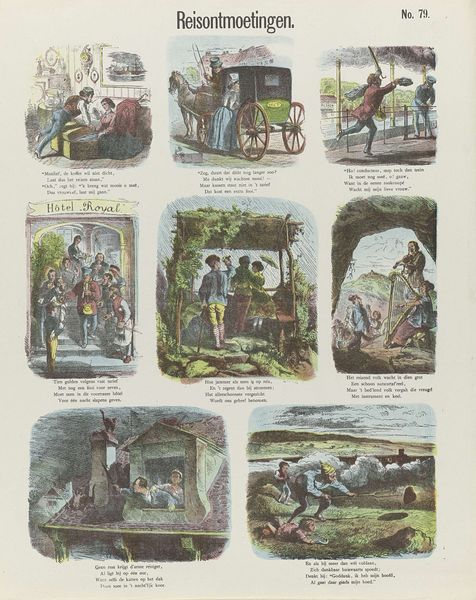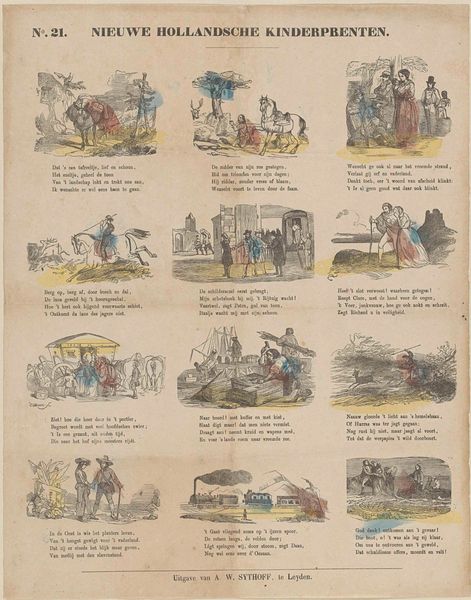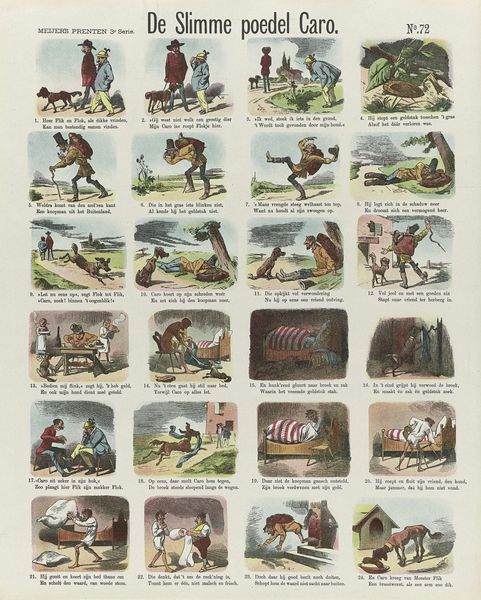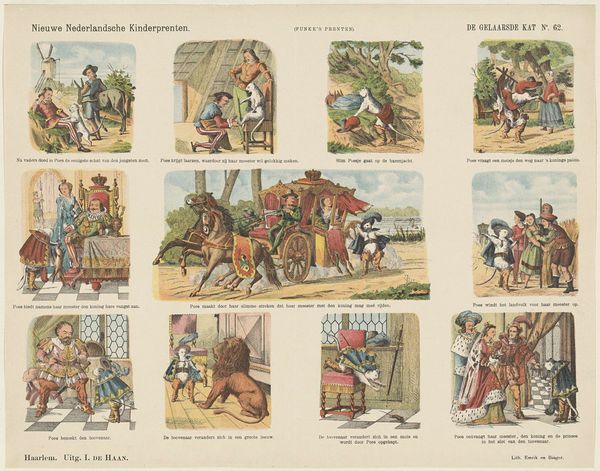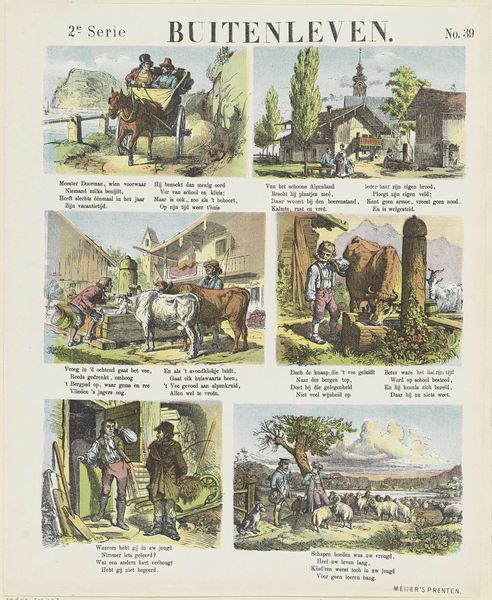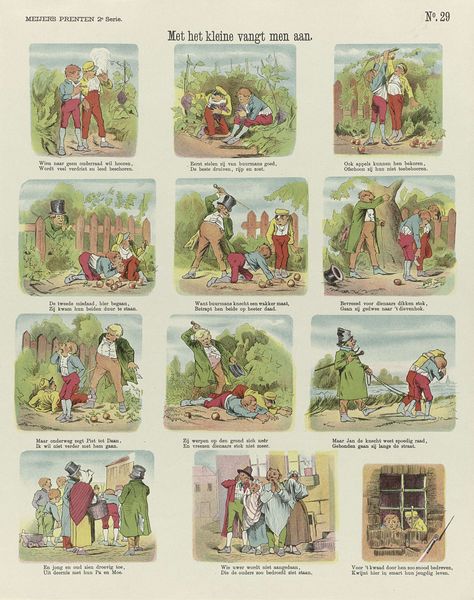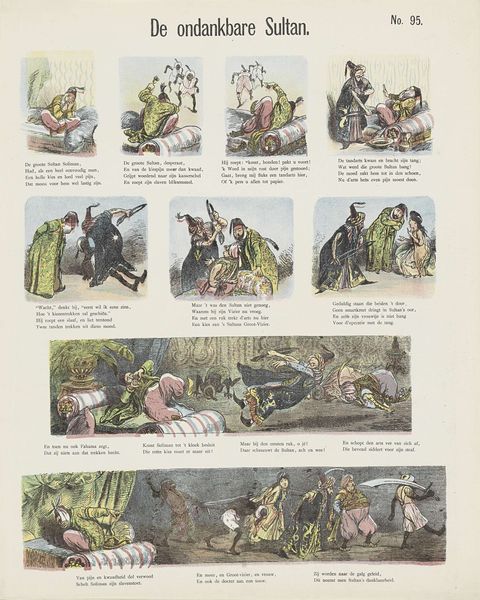
Dimensions: height 430 mm, width 345 mm
Copyright: Rijks Museum: Open Domain
Editor: Here we have "De hoogste prijs uit de paardenloterij," or "The Highest Prize from the Horse Lottery," from 1878, attributed to De Ruyter & Meijer. It looks like a print, maybe a watercolor print given the style. It seems to depict scenes from a narrative. What cultural symbolism can you find in this artwork? Curator: The clustering of these vignettes itself suggests a fragmented memory, piecing together the highs and lows of fortune. Notice how the horse, typically a symbol of status and power, is portrayed here not as a majestic creature, but as an unpredictable element of daily life. Editor: Unpredictable indeed, it certainly seems the opposite of a prize. So, the horse is deconstructed from being a symbol of wealth? Curator: Precisely! Its behavior, whether stubborn, injured, or runaway, mirrors the capricious nature of fate. The small texts below each image provide further insight into the meaning of the depicted moments. Each of those has its own emotional context. Editor: So the image is like a map of misfortunes surrounding this so called ‘prize’. Almost cautionary. Curator: In a way, yes. And that makes me think of the stories passed down, warning against excess and highlighting life’s absurd turns. Consider these scenes as glimpses into a shared cultural understanding, communicated through visual metaphors of daily events. How do they trigger thoughts about cultural memory? Editor: Seeing these all together, it feels like looking at a story my great-grandparents might have told, a story filled with gentle humor and life lessons. Curator: Indeed, and that reveals that the artwork continues to resonate. The narrative of fortunes gained and lost retains its value, reminding us of cultural experiences across time.
Comments
No comments
Be the first to comment and join the conversation on the ultimate creative platform.

